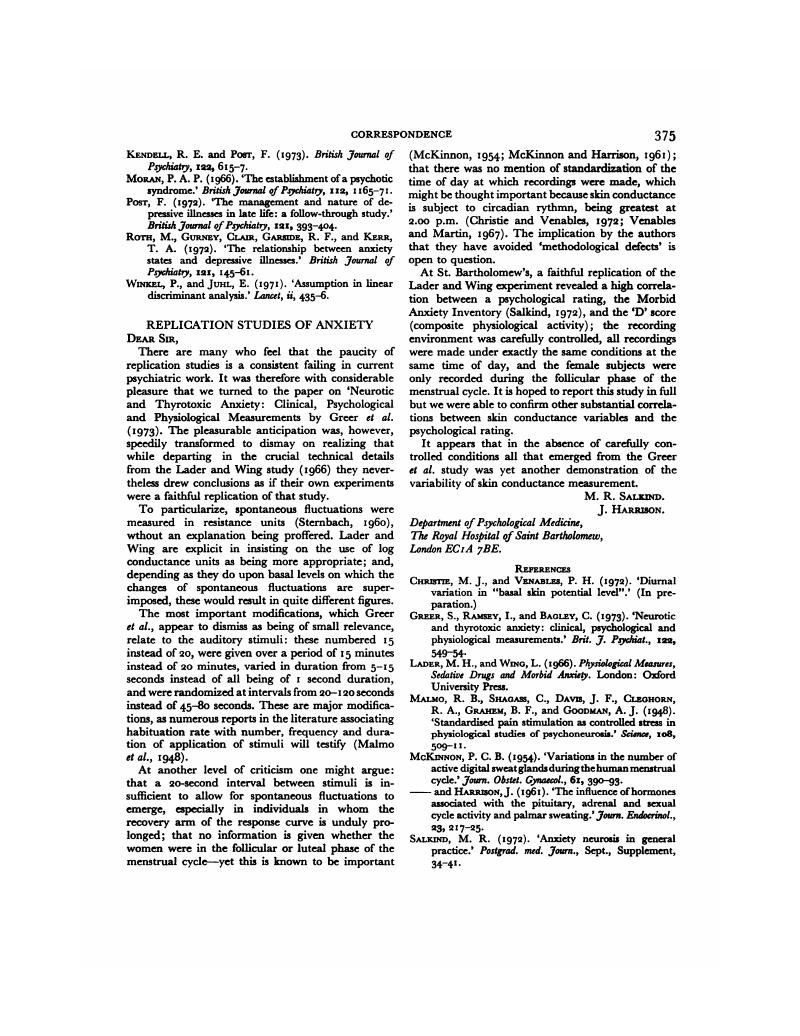No CrossRef data available.
Article contents
Replication Studies of Anxiety
Published online by Cambridge University Press: 29 January 2018
Abstract
An abstract is not available for this content so a preview has been provided. As you have access to this content, a full PDF is available via the ‘Save PDF’ action button.

- Type
- Correspondence
- Information
- Copyright
- Copyright © Royal College of Psychiatrists, 1973
References
Christie, M. J., and Venables, P. H. (1972). ‘Diurnal variation in “basal skin potential level”.’ (In preparation.)Google Scholar
Greer, S., Ramsey, I., and Bagley, C. (1973). ‘Neurotic and thyrotoxic anxiety: clinical, psychological and physiological measurements.’ Brit. J. Psychiat., 122, 549–54.Google Scholar
Lader, M. H., and Wing, L. (1966). Physiological Measures, Sedative Drugs and Morbid Anxiety. London: Oxford University Press.Google Scholar
Malmo, R. B., Shagass, C., Davis, J. F., Cleghorn, R. A., Grahem, B. F., and Goodman, A. J. (1948). ‘Standardised pain stimulation as controlled stress in physiological studies of psychoneurosis.’ Science, 108, 509–11.CrossRefGoogle ScholarPubMed
McKinnon, P. C. B. (1954). ‘Variations in the number of active digital sweat glands during the human menstrual cycle.’ Journ. Obstet. Gynaecol., 61, 390–93.Google Scholar
McKinnon, P. C. B. and Harrison, J. (1961). ‘The influence of hormones associated with the pituitary, adrenal and sexual cycle activity and palmar sweating.’ Journ. Endocrinol., 23, 217–25.Google Scholar
Salkind, M. R. (1972). ‘Anxiety neurosis in general practice.’ Postgrad, med. Journ., Sept., Supplement, 34–41.Google Scholar
Sternbach, R. A. (1960). ‘Some relationships among various “dimensions” of autonomic activity.’ Psychosom. Med., 22, 430–34.Google Scholar
Venables, P. H., and Martin, I. (1967). Manual of Psycho-Physiological Methods. Amsterdam: North-Holland.Google Scholar



eLetters
No eLetters have been published for this article.